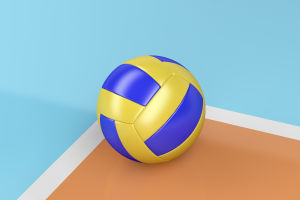Hey Lykkers! Ready to add a splash of fun to your next beach day?
Let's dive into why the beach ball is the ultimate summer accessory that brings endless fun and joy!
What is a Beach Ball?
A beach ball is a large, inflatable ball that is perfect for outdoor activities, especially on the beach. Typically made from durable plastic or vinyl, beach balls come in a variety of colors and patterns, making them easy to spot in the sand or water. Their lightweight design makes them easy to toss, hit, and bounce around, giving everyone from kids to adults something fun to enjoy.
History of the Beach Ball
The beach ball was invented in 1938 by Jonathon DeLonge, who originally called it the "deLonge ball." He created it as a lightweight, durable ball for playing at the beach. The bright, multicolored pattern quickly became popular, and the beach ball soon became a symbol of fun and relaxation in the sun. Its simple design and playful nature have made it a staple in beach activities for decades.
Types of Beach Balls
While the classic beach ball is often multi-colored, there are several variations designed to enhance the fun. Some beach balls come with patterns or logos representing brands or sports teams. There are also giant beach balls, which can be played with in the water or on large sandy surfaces. For those who love an extra challenge, there are also weighted beach balls that can be used for sports or water games like volleyball.
Beach Ball Games and Activities
Video by Your Therapy Source
Benefits of Playing with a Beach Ball
Playing with a beach ball is not only fun, but it also offers some surprising health benefits. The light exercise of tossing, bouncing, and chasing a beach ball can help improve coordination, balance, and overall fitness. Whether you're playing a game of volleyball, soccer, or simply tossing the ball back and forth, the repetitive motions help with muscle endurance and flexibility.
How to Make the Most of Your Beach Ball
To make your beach ball experience even more enjoyable, consider adding some games to the mix. For example, you can play a classic game of beach ball volleyball, or try a fun game of keep-away, where one person tries to keep the ball away from the others. If you're near the water, try bouncing the ball on the waves—a simple activity that turns into an exciting challenge.
Taking Care of Your Beach Ball
A beach ball is designed to withstand some rough play, but it's important to take care of it to ensure it lasts all season long. Avoid sharp objects like rocks or glass when you're playing on the sand, as they can easily puncture the ball. When you're done using it, make sure to deflate the ball and store it in a cool, dry place to prevent damage from the sun or heat.


